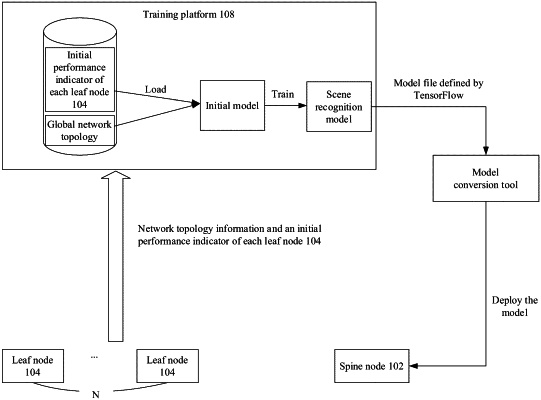| CPC H04L 47/122 (2013.01) [H04L 41/12 (2013.01); H04L 47/125 (2013.01); H04L 47/29 (2013.01); H04L 47/829 (2013.01)] | 12 Claims |

|
1. A network congestion control method, applied to a spine-leaf network system, wherein the spine-leaf network system comprises a spine node and at least one leaf node that communicates with the spine node, and the method comprises:
receiving, by the spine node, network information sent by the at least one leaf node, wherein the network information comprises network topology information of the at least one leaf node and a network performance indicator of the at least one leaf node;
networking the at least one leaf node and the spine node based on the network topology information of the at least one leaf node, to obtain a combined network topology, wherein
the combined network topology is a global network topology of the spine-leaf network system;
calling a scene recognition model to process a target performance indicator, to obtain a network traffic scene corresponding to the at least one leaf node, wherein the target performance indicator is the network performance indicator of the at least one leaf node or a network performance indicator obtained by preprocessing the network performance indicator of the at least one leaf node, and the scene recognition model is obtained through training in advance based on an initial performance indicator and an initial traffic scene of each node in the spine-leaf network system;
obtaining a scene control table, wherein the scene control table records a mapping relationship between a scene and congestion control information, and the mapping relationship is that the congestion control information corresponds to at least one scene;
querying the scene control table for target control information corresponding to the network traffic scene; and
performing network congestion control on the at least one leaf node based on the network target control information.
|